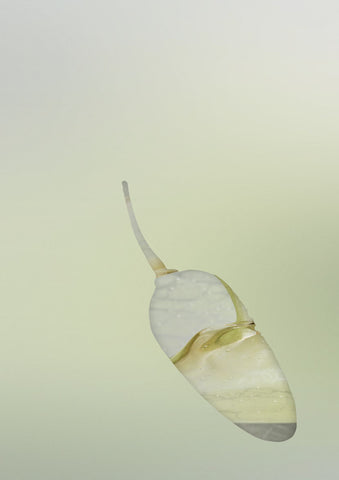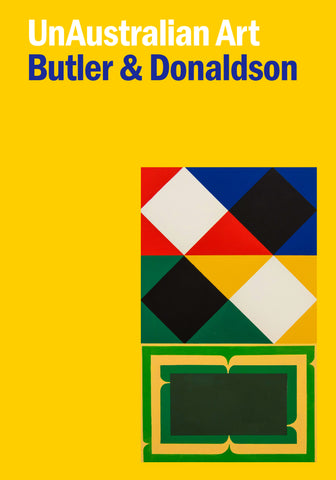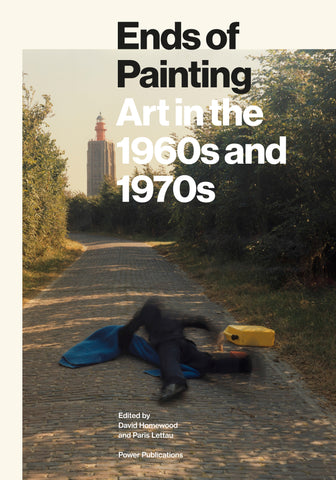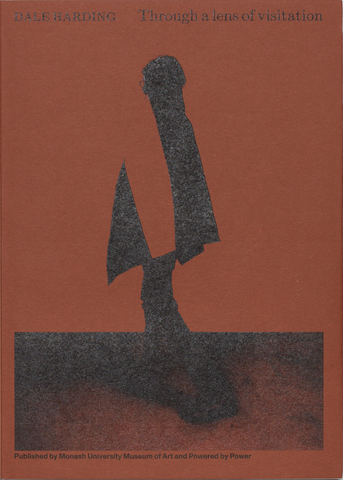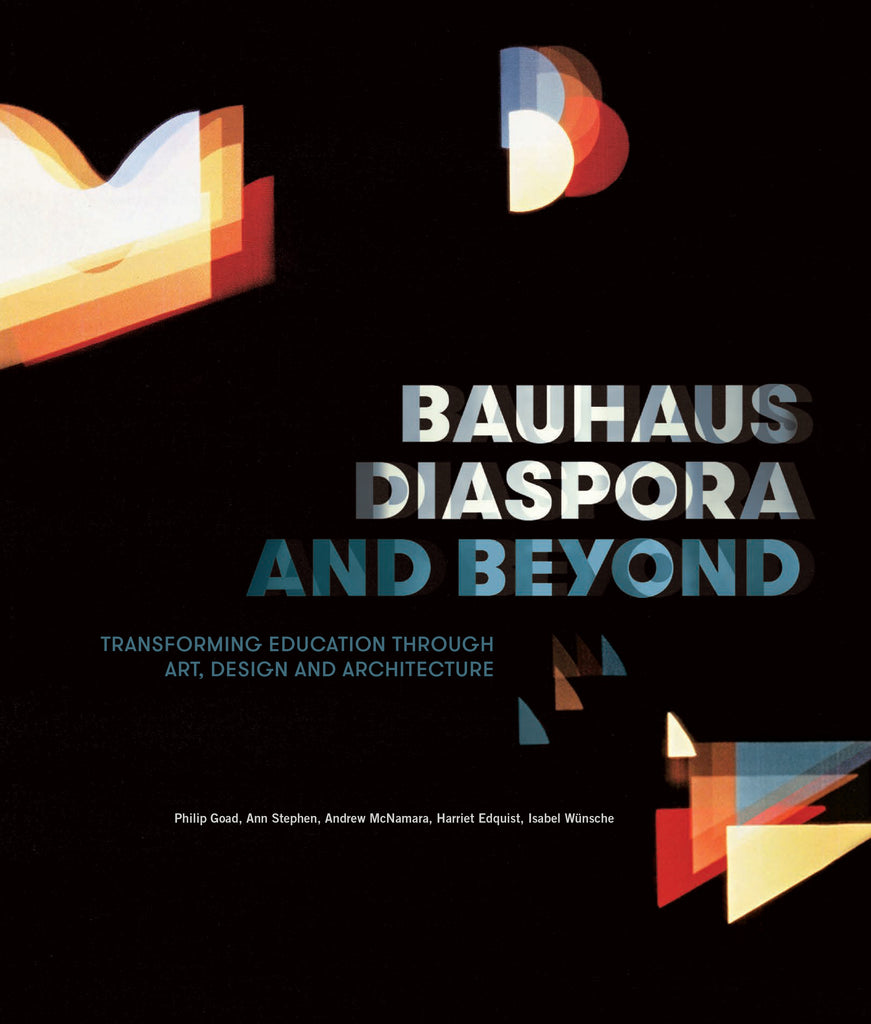
Bauhaus Diaspora and Beyond: Transforming Education through Art, Design and Architecture
$64.99
Edited by
Philip Goad
Ann Stephen
Andrew McNamara
Harriet Edquist
Isabel Wünsche
A co-publication from
Melbourne University Publishing
and Power Publications
Bauhaus Diaspora is a vibrant, pioneering account of how the centrifugal forces of history dispersed artists and designers worldwide after the Nazi takeover in Germany and the outbreak of World War II, some of them landing in Australia and New Zealand, and perpetuating the art and design spirit and practice of the Bauhaus. This richly illustrated book abounds in new material, and the result of a wonderful teamwork of an international group of scholars, attentive to the tremendous importance of education and artists’ role in it. An instant classic.
—Eva Forgács, Art Center College of Design, Pasadena
A highly original, nuanced examination of the Bauhaus in diaspora, which traces the multiple paths and circuitous routes that modernist émigrés travelled to bring innovation in modern art, architecture and design education to places such as Australia and New Zealand. This well calibrated, interdisciplinary study offers the reader remarkable insight into the work of key Bauhaus members and excavates previously under-acknowledged figures. Superbly illustrated with rare photographs, drawings and artworks, Bauhaus Diaspora is essential reading for anyone interested in the reach of the Bauhaus and its diverse afterlives.
—Robin Schuldenfrei, The Courtauld Institute of Art, University of London
Bauhaus Diaspora and Beyond contributes a fascinating and not well known aspect to the global influences of the Bauhaus. With its innovative approach to art, design and architecture via themes of migration, networks and pedagogy, this book places the Bauhaus not only at the core of today’s problems and debates, but it also presents the works and voices of Australian and New Zealand practitioners and teachers in the fields of art, design and architecture that were previously overlooked. When celebrating the Bauhaus centenary in 2019, it is exciting and entirely fitting that we embrace these Australasian stories to gain a fuller and timely picture of the Bauhaus and its global aftermath.
—Claudia Perren, Director, Bauhaus Dessau Foundation
Paperback
ISBN 978-0-522875-62-1
125 colour images
115 black & white images
288 pp
1300 gms
270 x 230 mm
Bauhaus Diaspora and Beyond: Transforming Education through Art, Design and Architecture presents an extraordinary new Australasian cultural history. It is a migrant and refugee story: from 1930, the arrival of so many émigré, internee and refugee educators helped to transform art, architecture and design in Australia and New Zealand. Fifteen thematic essays and twenty individual case studies bring to light a tremendous amount of new archival material in order to show how these innovative educators, exiled from Nazism, introduced Bauhaus ideas and models to a new world. As their Bauhaus model spanned art, architecture and design, the book provides a unique cross-disciplinary, émigré history of art education in Australia and New Zealand. It offers a remarkable and little-known chapter in the wider Bauhaus venture, which has multiple legacies and continues to inform our conceptions of progressive education, creativity and the role of art and design in the wider community.
Ann Stephen and Philip Goad were featured on ABC Radio National’s The History Listen.
The Bauhaus, a German design school founded in 1919, was both short-lived and highly influential. In the year of its centenary, Philip Goad, Ann Stephen, Andrew McNamara, Harriet Edquist, and Isabel Wünsche trace the legacy of the Bauhaus in their book, Bauhaus Diaspora and Beyond: Transforming Education through Art, Design and Architecture.
—Art Guide Australia, extract from Introduction
Without a doubt this book is an important contribution to scholarship on the international impact of Bauhaus modernism. But it may also be read as a consideration of notions that continue to beset the world at large: war, immigration, and the many possibilities of modernity.
—John Mateer, reviewed in Sydney Review of Books
Bauhaus Diaspora illustrates instead that avant-garde changes can take place incrementally, as as the infiltration of educational institutions by European emigres transformed Australian arts education, and briefly at least, society’s attitudes to architecture, design and living more broadly.
—Darren Jorgensen, reviewed in Daily Review
Diasporas, by definition, tend to be complex, vast and unwieldy – this 279-page compilation of 15 essays and 20 case studies, varying in length and degree of focus, enables us to follow the multilayered approaches, particularly in education, that enabled a Bauhaus sensibility to gain a foothold within the Australian education system and change a country’s architecture, design and crafts forever.
—Caroline Montague, reviewed in Architecture Now
The many threads of Bauhaus Diaspora and Beyond make a significant contribution towards Goad, Stephens, and McNamara’s ongoing reassessment of Australian modernism, and furthermore, the celebration of the contribution of émigrés and refugees fleeing Europe in the late 1930s is a timely one—both in Australia and elsewhere. The book’s extensive original and rare images make it a valuable resource for students and scholars, and include not only ‘official documentation’ such as paintings, posters, exhibition photographs, and documentary photographs, but also a wealth of supplementary ephemeral material such as letters, newspaper articles, and sketches. Importantly, the book not only documents ‘that education was a crucial aspect of émigré practice’ (p. 242), but also uncovers the various types of activities that constitute education beyond formal teaching—and, in this respect, could be a valuable contribution to a reassessment of global modernism too.
—DJ Huppatz, reviewed in Journal of Design History
Amid all the hoopla surrounding the centenary in 2019 of the Bauhaus—naturally more pronounced in Germany—it is gratifying to see such a fine Australian publication dealing with the international influence of this short-lived, revolutionary art and design teaching institute. … This fascinating book introduces many lesser-known figures and contextualises the postwar art scene in Australia.
—Christopher Menz, reviewed in Australian Book Review
CONTENTS
Foreword
by Claudia Perren
Introduction: Bauhaus Diaspora and Beyond
by Philip Goad, Andrew McNamara and Ann Stephen
Case Study: Henry Pynor, Frank Weitzel: ‘Man’s Study’, Burdekin House, 1929
by Philip Goad
Case Study: Eleonore Lange (1893–1990)
by Andrew McNamara
ORIGINS
Chapter 1: Reform Education and Bauhaus Pedagogy
by Isabel Wünsche and Wiebke Gronemeyer
Case Study: Adolf Hölzel and Colour Theory at the Bauhaus
by Isabel Wünsche
Case Study: Paul Klee, Distel-bild (Thistle picture), 1924
by Ann Stephen
Case Study: Gertrude Herzger-Seligmann (1901–1977)
by Ann Stephen
Chapter 2: Education for Architecture, Vienna and Beyond
by Philip Goad and Harriet Edquist
Case Study: Ernst Fooks and Das Wachsende Haus, Vienna, 1932
by Philip Goad
Case Study: Slawa Duldig (1901–1975), Designer, Artist and Teacher
by Harriet Edquist
DIASPORA
Chapter 3: Exile, Internment and Hirschfeld-Mack in Geelong
by Andrew McNamara and Ann Stephen
Case Study: Quakers and the Bauhaus Diaspora
by Ann Stephen
Case Study: Georg Teltscher (1904–1983)
by Andrew McNamara
Chapter 4: Bauhaus via London: Dahl and Geoffrey Collings, Alistair Morrison and Richard Haughton James
by Veronica Bremer and Isabel Wünsche
Case Study: Simpsons of Piccadilly
by Veronica Bremer
Chapter 5: Art Historiography in Exile: Joseph Burke, Ursula Hoff, Franz Philipp and Gertrude Langer
by Wiebke Gronemeyer and Andrew McNamara
Chapter 6: New World Bauhaus: Harry Seidler, Harvard and Black Mountain College
by Philip Goad
AND BEYOND
Chapter 7: Hirschfeld-Mack’s Role in the Postwar Recovery of the Bauhaus Legacy
by Andrew McNamara
Case Study: Bauhaus Legacy in Europe: The Ulm School of Design
by Wiebke Gronemeyer
Chapter 8: 131 UNESCO and the Struggle for Modern Art Education in the Mid-Twentieth Century
by Ann Stephen
ART
Chapter 9: Encounter and Deployment: Sydney Moderns and Bauhaus Ideas
by Ann Stephen
Case Study: Frank Hinder (1906–1992)
by Ann Stephen
Case Study: Josef Albers, Homage to the Square, 1966
by Ann Stephen
Chapter 10: The Bauhaus: Aspects & Influence
by Ann Stephen
Case Study: Bauhaus and the 1960s Print Revolution
by Ann Stephen
Chapter 11: Art is Education, Art is Life: Centre Five’s Bauhaus Precepts
by Jane Eckett
Chapter 12: Colour–Light Experiments
by Andrew McNamara
Case Study: Udo Sellbach (1927–2006)
by Andrew McNamara
DESIGN
Chapter 13: The Shaping of Design
by Harriet Edquist
Case Study: George Kral (1928–1978) and the Gallery A Design Group
by Harriet Edquist
Case Study: David Foulkes-Taylor (1929–1966)
by Julian Goddard
Case Study: Experiments in Fibre Art: Indigenous Communities and Émigrés
by Harriet Edquist
ARCHITECTURE
Chapter 14: Architecture Transformed: Émigré Educators, Brian Lewis and Fritz Janeba
by Philip Goad
Case Study: ‘Austria in Australia’: Fritz and Kathe Janeba in Warrandyte
by Philip Goad
Case Study: Robin Boyd and the Bauhaus
by Philip Goad
Chapter 15: Bauhaus Influences in New Zealand
by Linda Tyler
Case Study: Peter Haythornthwaite (1944–) and the Elam School of Fine Arts
by Linda Tyler
Conclusion
by Philip Goad, Andrew McNamara and Ann Stephen
Notes
Bibliography
Acknowledgements
About The Authors
Index








